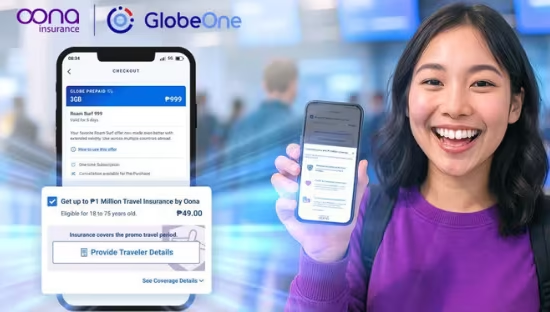
US Mobile’s New Tri-Network eSIM: One Plan, Three Major Carriers, Zero Dead Zones
US Mobile isn’t your average MVNO anymore. The company now calls itself a “super carrier”—and for once, that label might not be marketing fluff. Why? Because US Mobile gives you access to all three major U.S. networks—AT&T, T-Mobile, and Verizon—from one account. The promise sounds simple: get the best signal, anywhere, anytime. In practice, it’s a fascinating mix of eSIM provisioning, dynamic network profiles, and a set of fair-use rules that stop you from hopping around too often. US Mobile tri-network eSIM
This is the kind of innovation that quietly redefines what “coverage” even means in 2025.
How Tri-Network Access Really Works
At its core, US Mobile is an MVNO—a mobile virtual network operator. That means it doesn’t own any cell towers; instead, it leases network access from the big three carriers and packages that connectivity into its own SIM and eSIM plans.
Traditionally, you’d be locked into whichever carrier your SIM profile was set to. But eSIM changed the rules. US Mobile can now push a new network profile over the air, letting your phone “jump” from one carrier to another without touching a physical SIM card.
That’s what powers its Tri-Network Access: you can either run in a multi-network mode that automatically toggles between networks in the background or use on-demand switching, where you manually move your line to a different carrier through the US Mobile app.
The first feels seamless—like Google Fi’s early hybrid setup—while the second is more hands-on but offers control that’s rare in consumer mobile plans.
On-Demand vs. Multi-Network Mode
Multi-network mode is where the magic happens. Your device quietly hops between two or three carriers depending on signal strength, tower congestion, or even weather interference. Say you’re on a cross-country road trip: AT&T might rule rural stretches, while Verizon dominates in the next metro area. You never have to think about it.
On-demand switching, on the other hand, is the DIY version. From the app, you choose a new network, US Mobile reprovisions your eSIM, and you’re back online. It takes about 15 minutes (usually less), though you’ll need Wi-Fi during the transition. It’s a clever workaround when you hit a dead zone—or when one carrier’s 5G feels more “meh” than “ultra.”
Just don’t try to flip networks mid-Zoom call or right before boarding a plane. The process is smooth, but not instantaneous.
Limits, Fees, and Fair-Use Rules
Naturally, US Mobile doesn’t want users treating network hopping like Pokémon Go. The carrier limits you to one network switch every three hours, with a cap of eight switches per billing cycle.
The first two are free, but after that, small fees apply—unless you’re on a premium plan. It’s a fair system: most people won’t hit the cap unless they’re aggressively chasing speed tests.
These limits keep the system stable and prevent what US Mobile calls “churn switching”—constant carrier swapping that could bog down backend systems.
Coverage, Speed, and Deprioritization Reality
So, why bother switching? Because each U.S. carrier has its sweet spots.
Independent tests from Opensignal and Ookla consistently rank T-Mobile highest for 5G availability and average speed. Verizon, meanwhile, dominates reliability scores in RootMetrics reports, while AT&T tends to perform most consistently across cities.
However—and this is crucial—MVNO traffic like US Mobile’s can be deprioritized during congestion. That means even with full signal bars, your speed might dip when the stadium fills up or during rush hour.
Here’s where US Mobile’s tri-network advantage shines: if one carrier’s network is overloaded, you can just move to another. It’s like having three backups in your pocket.
Making the Most of US Mobile’s eSIM Experience
To unlock this flexibility, you’ll need a modern, unlocked phone with eSIM support—think recent iPhones, Google Pixels, or Samsung Galaxy flagships.
Since 2022, U.S. iPhones have shipped eSIM-only, so no physical SIM slot is even available. The good news? eSIM makes switching networks as simple as scanning a QR code or tapping a confirmation in-app.
For best results, make sure your device supports all major 5G bands—especially mid-band (C-band and n41)—and has VoLTE and Wi-Fi Calling enabled.
If you’re on a multi-network plan, the system handles everything automatically. If you’re doing on-demand switching, just plan ahead: use Wi-Fi, avoid mid-meeting toggles, and keep an eye on your monthly switch count to avoid surprise fees.
Who This Tri-Network Plan Really Helps
The biggest winners? Frequent travelers, hybrid workers, rural users, and students.
If you’re constantly moving between ZIP codes or find yourself in coverage “gray zones,” this setup is a godsend. You can finally stop worrying about which carrier dominates which city—because you’ve got them all.
Even if you stay in one area most of the time, having that “safety switch” for emergencies, outages, or major events adds serious peace of mind.
The Bigger Picture: A Glimpse Into the Future of Mobile
What US Mobile is doing isn’t just a gimmick—it’s part of a bigger industry shift. Carriers around the world are experimenting with multi-IMSI eSIMs, smart routing, and AI-driven network selection.
Platforms like 1Global and even Google Fi have flirted with similar tech, but few consumer carriers in the U.S. have executed it this elegantly. US Mobile’s blend of tri-network coverage, transparent pricing, and app-based control feels closer to how travel eSIMs like Airhub or Nomad operate—except here, it’s all domestic.
It also hints at where connectivity is heading: networks as interchangeable utilities rather than loyalties.
Final Verdict
US Mobile’s “super carrier” concept is more than marketing bravado—it’s a real and practical evolution of the American mobile experience. With eSIM at its core, the company bridges the best of all three networks and gives users the freedom that used to be reserved for enterprise routers or global travelers.
There are still caveats—manual switches aren’t instant, deprioritization exists, and heavy switchers will hit limits—but the value proposition is crystal clear: better control, better coverage, and fewer dead zones.
Compared to players like Google Fi (which uses T-Mobile and US Cellular) or Visible (which locks you to Verizon), US Mobile’s tri-network flexibility is unmatched right now. And in a market where most carriers fight to trap you, US Mobile’s approach—letting you roam freely between the giants—is refreshingly subversive.
It’s not just redefining MVNOs. It’s redefining what it means to have a connection that truly follows you.












